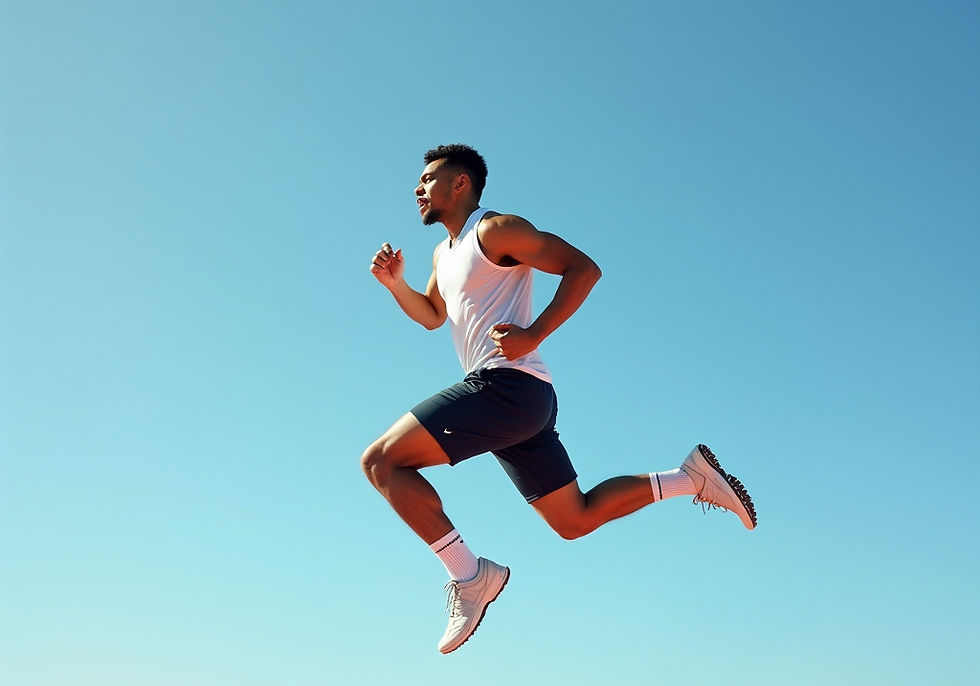High Output Training
- Max Brower
- Apr 30
- 4 min read
Updated: May 21
As strength and conditioning coaches, it is our job to physically develop the athletes. It is the sport coaches job to improve the performance of their sport skills. Athletes play their sport on a weekly/daily basis. Recreating their sport in the weight room is ineffective and not possible. Nothing is as specific to the sport as playing the sport. We are expected to create a stronger, faster, more durable athlete, which enhances their potential for sport skill performance. This is done by improving the capacity of their neuromuscular system, doing things that actually create physiological adaptation. In training, athletes should be given a stress that they don't see daily in their sport. The strength and conditioning training should stress:
Amount of force production
Rate of force production
Tissue quality
These qualities are objectively trainable, and create a stronger and more durable engine. A stronger, faster, more mobile, more durable athlete has more potential to throw a baseball than a weaker and slower athlete. Therefore, the training outside of the sport should be focused on physically developing the athlete.
Amount of Force Production
Movement is driven by force. Depending on the movement, force is applied in various ways. However, all force is driven from the nervous system. An action potential is sent from the brain down the spinal cord to a motor unit. Maximal strength training improves this neural drive, our ability to recruit motor units.
This ability is best challenged through exercises that are stable and involve multiple joints with a heavy load. Working in the 1-5 rep range with no more than 2 reps left in reserve is a good guideline. When using percentages, this typically comes out to >80% 1RM. This ensures high threshold motor unit recruitment, which contains the most forceful muscle fibers. The more complex the movement is, the lower the output. We want improvements to come from the ability of the nervous system to produce force, not just getting better at the exercise. We are after a stimulus not an exercise, but certain exercises are better at developing strength than others. Ask yourself:
How much muscle tissue is being activated?
What are the force demands on the tissue being activated?
If you ask yourself those questions, you can conclude:
a full range of motion back squat is better than a goblet split squat
a heavy DB row is better than a bird dog band row
a heavy bench press is better than single arm stability ball glute bridge DB bench
You get the point. There is a reason traditional movements are traditional, because they work.
Time is not a factor when training for maximal strength. The goal is not to move at high speeds, it is to expose the body to a high neural drive, which increases potential for force production in high speed movements. Ensure technique can be performed at a high level, then load the movements.
Rate of Force Production
Heavy lifting is great for the reasons lifted above, but it is useless if it is not applied in time frames applicable to sport. Sporting movements do not allow the time for maximal force production, so it is imperative to stress the nervous system's ability to produce force fast. It is important to use exercises that force this out of the athletes, the movement must provide a time constraint. This quality is best trained through movements that are stable, simple, and ensure intent.
Examples include:
Maximal effort sprinting (max velocity and acceleration)
Maximal effort decelerations
Maximal effort jumping
Olympic lifts
Intent is absolutely essential when training this quality. Timing/racing sprints and adding a height or distance goal to jumping are good ways to ensure intent. Olympic lifts with the catch ensure intent because completion of the rep requires it. We must reach high levels of fast twitch fiber innervation to produce force at a high rate. This is not possible without maximal intent. Below are examples of ensuring jump intent by providing a distance or height goal:
Tissue Quality
Tissue quality refers to developing the structure of the body. Structure dictates function. Bigger muscles have the ability to produce force, longer fascicle lengths have the ability to contract faster, stiffer tendons allow for more efficient transfer of force from the muscle to the bone. When targeting tissue, we typically need high levels of tension through large ranges of motion. I am not going to get deep into the hypertrophy research, but lifting close to failure in deep ranges of motion is a good idea. Developing tendon stiffness is done by heavy slow lifting and isometrics.
Not every sport requires high levels of muscle mass, but doing hypertrophy-style training is important to maintain health in the connective tissues, improving their ability to handle high levels of strain in practice and competition. Improving tendon stiffness is vital for rate of force development, but also economy of movement. The more efficient the tendon can transfer force, the less the muscle has to work, and the lower the metabolic cost. Sports require athletes to repeat high speed movements. Improving tendon qualities can play a role in this.
Conclusion
Athletes do strength and conditioning training for physical development, not sport skill development. They get plenty of skill work from team practice, individual practice, and games. They don't need more of it from the strength and conditioning coach. What they need is improvement in their output ability, raising their potential for sport-skill performance.


Comments